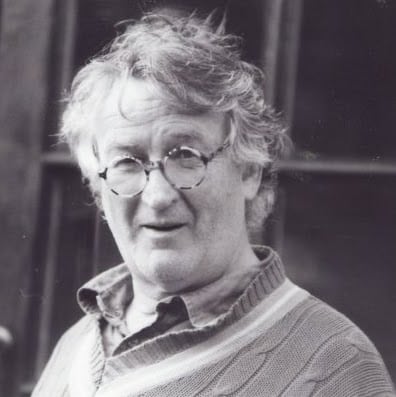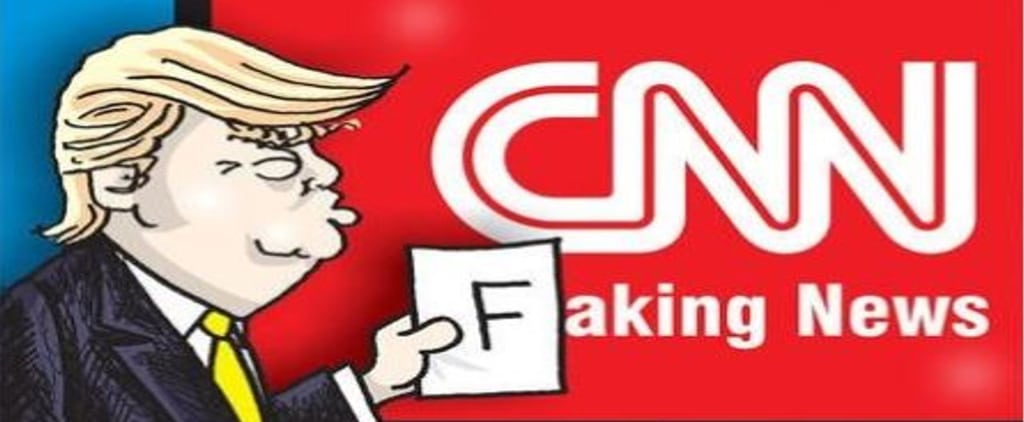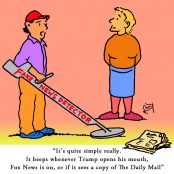[dropcap style=”font-size:100px;color:#992211;]P[/dropcap]resident Donald J Trump is an intriguing phenomenon. Any criticism of his presidency is dismissed as ‘Fake News’.
Nigel Farage described him as a silver-back gorilla, as he prowled the set whilst Hilary Clinton spoke during the presidential election campaign.
Something in that description rings true. There was a certain menace that stalked the stage as he waited his turn to speak – something powerful and pre-rational; something belonging to the animal kingdom. This is not a criticism. We would do well to recognise how much of our important affiliations are driven by animal magic.
Since coming to office, President Trump has claimed to be honouring his pre-election pledges. He had promised to ‘drain the swamp’; and this included an implicit threat to the news media.
Extraordinary performance by Trump at Chequers
After a meeting with Prime Minister May at Chequers in July, he refused to take a question from CNN, saying, ‘Not you, you’re from CNN. You’re fake news,’ and moved on to another question.
(Presumably the refusal was a form of temporary punishment for previous misdemeanours – since asking a question cannot, in and of itself, be fake. Questions make no claims.)
Malaysia’s ‘Anti-Fake News Law’ Repealed
In the meantime, Malaysia has just repealed a law regulating fake news. The law, itself only passed in April of this year, threatened anyone found guilty of publishing fake news with up to six years imprisonment and fines of up to $130,000.
Introduced just before the election in Malaysia by sitting Prime Minister, Najib Razak, the law was designed to suppress opinions levelled at the government and could be applied to satirists as well as straightforward criticism of the regime.
Its repeal has been lauded as a victory for free speech and for human rights. The repeal bill was put forward and passed by the new sitting government with Mathamir Mohamad at its helm. (See CNN report)
Fake News and the Free Press
Fake news is a recent phenomenon and its regulation is a subject of concern. We want a free press; but we do not want to be bombarded with fake news stories that, taken to be true, would misguide our judgments. What we need is independent regulation – just so that governments cannot be seen to be ‘marking their own homework’.
Regulation of a free press looks oxymoronic. To the extent that a press is regulated, it is shackled by rules it must observe.
The Leverson Inquiry
Her Majesty’s Government of the United Kingdom of Great Britain and Northern Ireland commissioned a public inquiry into the nature of press freedom and the need, if any, of press regulation. The National Archive website advises us,
The Prime Minister announced a two-part inquiry investigating the role of the press and police in the phone-hacking scandal, on 13 July 2011. Lord Justice Leveson was appointed as Chairman of the Inquiry.
Part 1 of the Inquiry examined the culture, practices and ethics of the press and, in particular, the relationship of the press with the public, police and politicians. Lord Justice Leveson was assisted by a panel of six independent assessors with expertise in the key issues that were considered.
Lord Justice Leveson opened the hearings on 14 November 2011, saying:
“The press provides an essential check on all aspects of public life. That is why any failure within the media affects all of us. At the heart of this Inquiry, therefore, may be one simple question: who guards the guardians?” (…)
Lord Justice Leveson published his Report on Part 1 of the Inquiry on 29 November 2012.
Part 2 of the Inquiry cannot commence until the current police investigations and any subsequent criminal proceedings have been completed.
The remit of part 2 of the Inquiry would look at media more broadly than newspaper coverage and would include a review of web-based content and the possibility of its regulation. Social media, including, Facebook, Snapchat, Instagram, Twitter and other platforms, are now being exploited by influential groups of policy shapers without oversight.
Part 1 set out rigorous proposals for the regulation of the traditional news agencies in the wake of the phone hacking scandal. Part 2 would look at social media as relatively new forms of interface between the public and those who seek to publish news or other information – a widening of the remit that would decide, “who guards the guardians”.
Leverson Inquiry Part Two Axed
After a government letter to Leverson, in which it was mooted that part 2 might not go forward, asking for his comments, and setting out responses from the public, Leverson replies in his letter,
Contrary to much commentary following Part One of the Inquiry, it was not concerned with the media (beyond newspapers) but the Terms of Reference for Part Two specifically do encompass both newspapers and ‘the media and… those responsible for holding personal data’: this is a very much wider group and one which has legitimately become the subject of much greater public focus in the years following the Inquiry’s report in November 2012.
On the matter of the new media, later in his letter, Leverson writes,
Turning to the media generally (along with those responsible for holding personal data), it is clear that the potential impact of the way in which information is disseminated by these organisations has become a serious issue of real public concern. The control of ‘Fake News’ is of critical importance. Having considered the matter very carefully, although I am grateful to be told of the detail of the work that is current underway, particularly in relation to the Digital Charter, I do not believe that, without involvement of those who have been affected by social media, confidential discussions between those that provide the platform for the dissemination of such material and the government is a sufficient response to the problem. The question is not (as you pose it) whether newspapers are more highly regulated than many new media outlets but whether those new media outlets should now be subject to greater regulation. In my view, it is entirely right that there is a mechanism to challenge the way in which the public interest should be served by social media and others working in this sphere by publicly holding them to account and requiring them, equally publicly, to articulate what they are doing, what they are prepared to do and how they are willing to address public concern in these areas. That is precisely what Part Two could achieve.
The first letter from the Home Office to Leverson has two annexes, the first of which, ‘Annex A’, includes a breakdown of public response to a consultation on moving forward with Part Two. This breakdown is introduced as an explanation of,
‘our approach in analysing [the] responses. This is set out below along with the top-level results of the consultation (…)
The government received 174,730 responses to the consultation, made up of emails, letters and online survey responses.
(…) Many newspapers also included ‘coupons’ that readers could fill out and send in to respond to the consultation. We have not categorised responses in any other way than how the responses were received, and all direct responses have been treated equally.
Subsequent to this report, however, the government mentions that it received 130,120 signatures via 38 degrees, all of which were in favour of the Inquiry’s continuation. The government did not include the signatories in its analysis. Of the 174,730 responses the government counted, 66% thought the Inquiry should not proceed; 12% thought it should go ahead; whilst 22% held no view.
We also received a number of petitions, the largest being from 38 degrees comprising 130,120 signatures in favour of continuing with Part 2. The petitions have not been included in the analysis (…) as we have not considered these to be direct responses in the way we have considered the 174,730 to be.
Addressing the question of the Inquiry’s continuance head on, Leverson writes in response,
The question is whether, bearing in mind all that was said in 2011 and all that has occurred since, it is now correct to abandon the assurances then given. In that regard, I would not personally count the responses in the way in which you have. Whatever might be so in relation to other consultations, that forms completed by completing newspaper coupons should each be counted individually but that a petition signed by 138,000 for 38 Degrees should not seems to put form over substance.
Had the 130,120 petitioners been included in the government’s analysis the public response would have read:
To continue 151,087
To discontinue 115,321
Undecided 38,442
Undeterred from its preferred course, the government wrote to Leverson informing him of the discontinuance of the Inquiry. Taking note of Leverson’s concerns regarding the new media, the minister writes to him,
High-quality journalism is under threat from the rise of clickbait and fake news (…) and from the dramatic rise of largely unregulated social media (…)
These challenges are urgent, and we do not therefore believe a public inquiry, which will understandably take a significant time to produce a report, is the most effective way to address these issues. Instead the Government is committed to developing the Digital Charter to respond quickly to these pressures. Under the Charter, we have set up an external review into press sustainability to ensure sustainable business models for high quality journalism, which will examine the roles and responsibilities of both the traditional press and other news providers.
Where does that leave us? And what are the threats of ‘fake news’?
“(…) who guards the guardians?”
The Malaysians, after just a few months of living under a new law that would punish peddlers of fake news – by which the opponents of the government understood this to mean criticise or in any other way cast aspersions upon the ruling party – repealed the law, thereby liberating its national press.
At the same time, in the USA, President Donald J Trump frequently derides opponents and oppositional media as fake news. It cannot be doubted that Trump would like to gag that section of the media, including the traditional press, referring to it as ‘the enemy of the people’.
Here in the United Kingdom, the government has decided to close the Inquiry that might have provided much needed recommendations on how to regulate the growing media platforms that threaten the traditional press.
Data analysts and media analytics phish our emails online activity to press ‘personalised’ advertisements upon us. Additionally, our political leanings can be gleaned (and exploited) from the platforms of social media, leaving us vulnerable to suggestive messages and circulars providing false information or partially slanted information covertly nudging our opinions this way or that.
Clickbait offers headlines and images that prompt us to search out ‘news’ that is frequently misinformation and, thereby, damaging to the formation of political opinion.
What is needed is an independent body of regulators who can oversee an increasingly divergent number of social media outlets that serve to sustain political views both legitimate and untenable. In a liberal democracy the question is sensitive and urgent. Until it is thought about, at the level in which the Leverson Inquiry conducted itself in Part One, we shall remain at risk.
If sensible fair and proportionate regulation is not forthcoming we should prepare ourselves to walk the streets under threat of silver back gorillas and other political henchmen; and we should prepare for civil unrest as divergence breeds intolerance.
The correspondence between the government and Sir Brian Leverson concerning the Inquiry can be found, in full, at the Guardian

Ed studied painting at the Slade School of Fine Art and later wrote his PhD in Philosophy at UCL. He has written extensively on the visual arts and is presently writing a book on everyday aesthetics. He is an elected member of the International Association of Art Critics (AICA). He taught at University of Westminster and at University of Kent and he continues to make art.




















